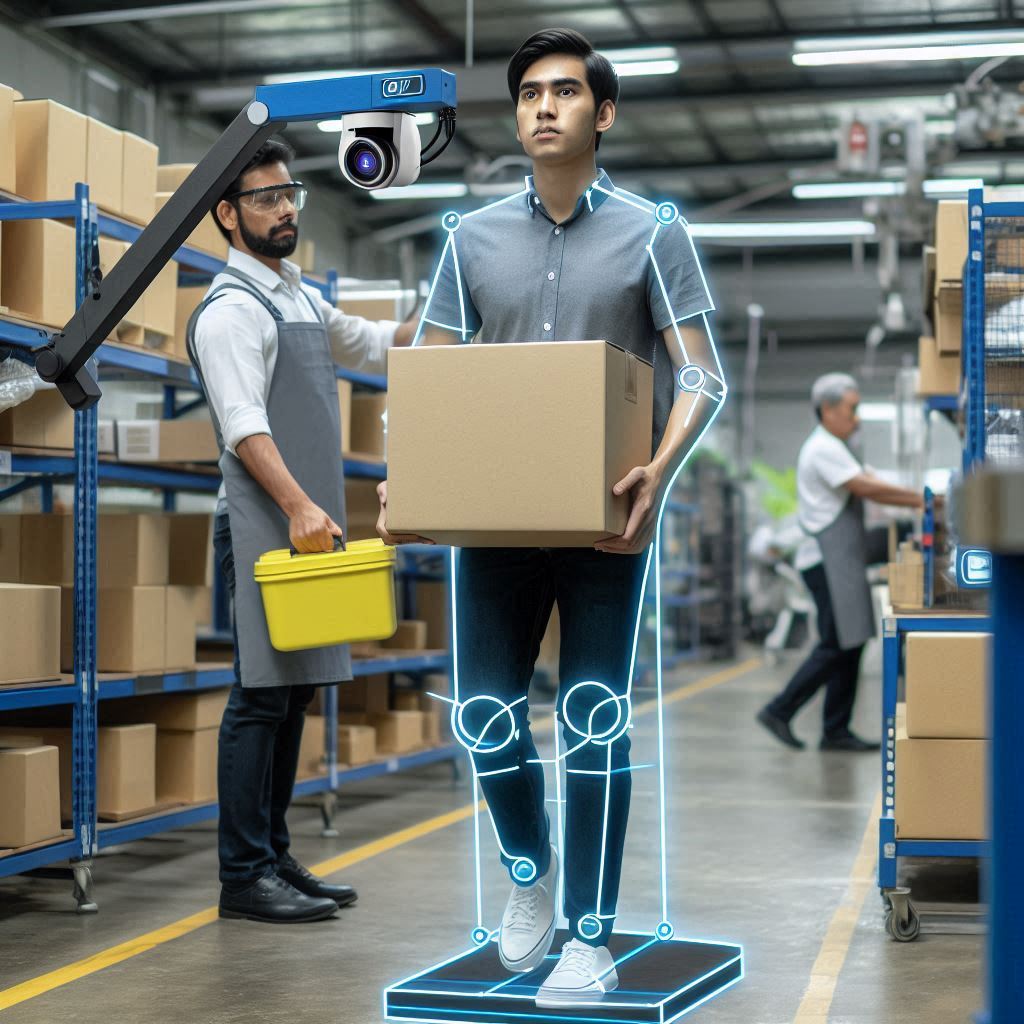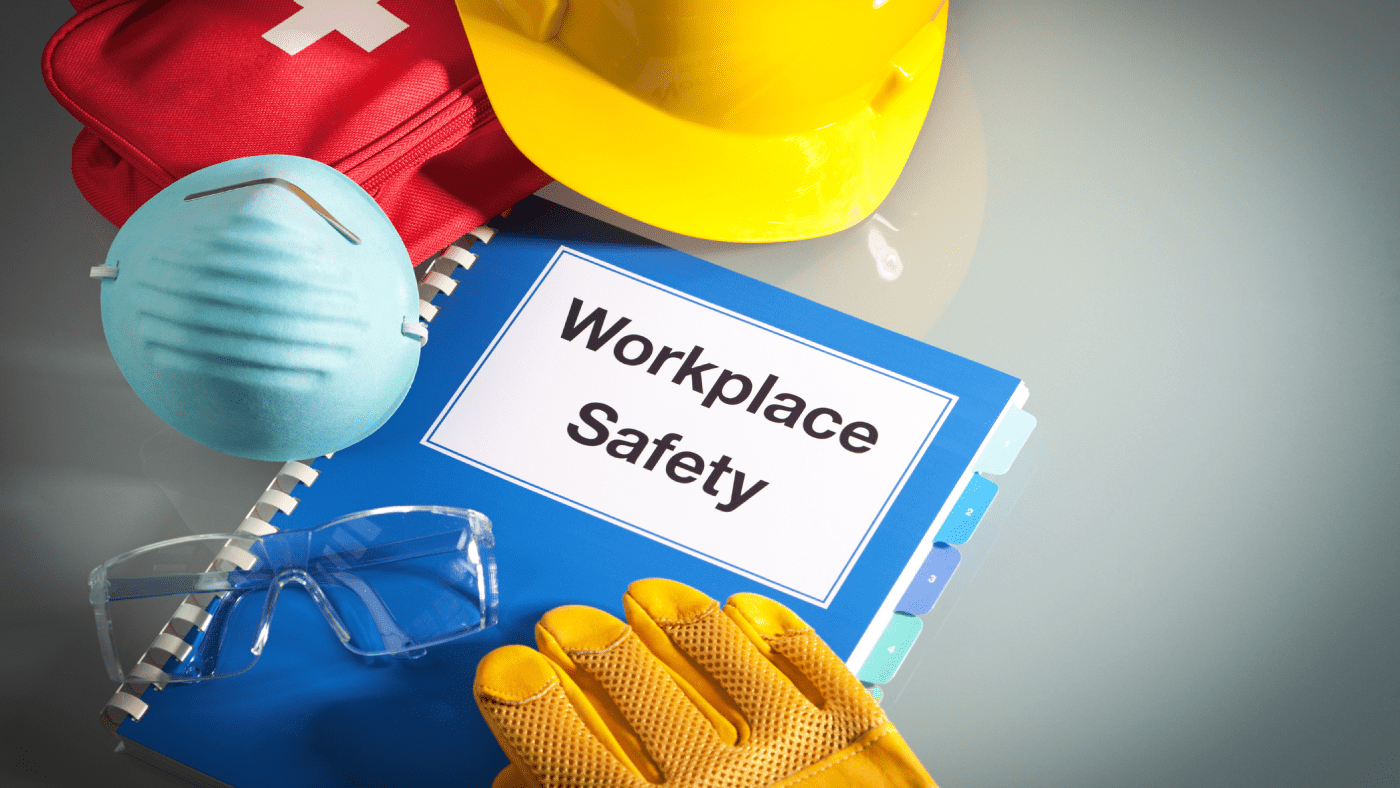Top Safety Hazards at Workplace:
Introduction:
The workplace can be a hazardous environment, posing various risks to employees’ health and well-being. According to the International Labour Organization (ILO), approximately 2.3 million workers die annually due to work-related accidents and diseases. Employers and employees must be aware of the potential hazards and take proactive measures to prevent and mitigate them. We shall understand and mitigate safety hazards using the following points.

Top Safety Hazards at Work
1. Falls: Slips, trips, and falls from heights or same-level surfaces, caused by slippery floors, uneven surfaces, or inadequate fall protection.

2. Musculoskeletal Disorders (MSDs): Repetitive strain injuries from lifting, bending, or prolonged physical activity.
3. Electrical Hazards: Electrical shock or electrocution from faulty equipment, wiring, or poor maintenance.
4. Chemical Hazards: Exposure to toxic substances, chemicals, or gases, causing respiratory problems or skin irritation.
5. Fire and Explosion Hazards: Fires or explosions from flammable materials, hot works, or equipment malfunction.
6. Confined Space Hazards: Atmospheric hazards, entrapment, and crushing risks in confined spaces.
7. Noise-Induced Hearing Loss (NIHL): Permanent hearing damage from prolonged exposure to loud noises.
8. Vibration-Related Hazards: Hand-arm vibration syndrome (HAVS) and whole-body vibration (WBV) risks.
9. Biological Hazards: Exposure to infectious diseases, such as COVID-19, influenza, and tuberculosis.
10. Psychological Hazards: Work-related stress, anxiety, and depression.
Workplace-Specific Hazards
1. Construction: Falls from heights, trench collapses, and equipment accidents pose significant risks. Implementing fall protection measures, ensuring trench stability, and maintaining equipment can mitigate these hazards.
2. Manufacturing: Hazards include inadequate machine guarding, electrical shock, and chemical exposure. Installing safety guards, enforcing loto lockout/tagout procedures, and providing personal protective equipment (PPE) can reduce risks.
3. Healthcare: Workers face bloodborne pathogens, chemical exposure, and ergonomic hazards. Implementing infection control protocols, using PPE, and promoting safe lifting practices can minimize risks.
4. Agriculture: Tractor accidents, chemical exposure, and musculoskeletal disorders are common hazards. Regular equipment maintenance, proper chemical handling, and ergonomic training can reduce injuries.
5. Mining: Respiratory diseases, explosions, and rockfall hazards threaten miner safety. Implementing ventilation systems, explosion prevention measures, and rockfall mitigation strategies can save lives.
Prevention Strategies
1. Conduct regular risk assessments.
2. Implement safety protocols and training.
3. Provide personal protective equipment (PPE).
4. Encourage employee reporting of hazards.
5. Regularly inspect equipment and workplaces.
6. Develop emergency response plans.
7. Foster a safety-first culture.
Effective Risk Management
Conduct thorough risk assessments to identify potential hazards. Implement controls, prioritize mitigation, and review regularly. This proactive approach minimizes workplace risks.
Safety Training and Protocols
Clear procedures and regular training empower employees to work safely. Simulate emergency scenarios to ensure preparedness.
Personal Protective Equipment (PPE)
Assess PPE needs, provide proper gear, and maintain its condition. This safeguards employees from hazards.
Open Communication
Encourage employee reporting of hazards and near-misses. Foster a culture of open communication.
Regular Inspections
Schedule regular checks to ensure compliance and identify potential hazards.
Develop response plans for fires, spills, and medical emergencies. Train employees for timely responses.
Safety-First Culture
Lead by example, recognizing and rewarding safe behavior. This fosters a shared commitment to workplace safety.
Machine Guarding: A Critical Safety Measure
Machine guarding is a crucial safety measure that protects workers from mechanical hazards, preventing injuries and fatalities. By installing safety guards on machinery, employers can significantly reduce the risk of accidents and ensure a safer working environment. Effective machine guarding helps prevent hazards in several ways:
Prevents Entanglement and Crushing
Machine guards prevent entanglement and crushing hazards by blocking access to moving parts, such as gears, belts, and chains. This prevents workers from getting caught in the machinery, which can cause severe injuries, including amputations and fatalities.
Reduces Risk of Cuts and Lacerations
Machine guards also reduce the risk of cuts and lacerations from sharp edges or moving blades. By covering sharp edges and preventing access to moving blades, machine guards protect workers from serious injuries.
Prevents Electrical Shock
In addition, machine guards can prevent electrical shock by enclosing electrical components and preventing workers from coming into contact with live wires.
Enhances Compliance
Implementing machine guarding measures enhances compliance with regulatory requirements, reducing the risk of fines and penalties.
Boosts Productivity
By providing a safer working environment, machine guarding can also boost productivity. When workers feel safe, they are more focused and efficient, leading to increased productivity.
Conclusion
Workplace safety is a shared responsibility between employers and employees. By understanding the top safety hazards and implementing prevention strategies, we can reduce the risk of injuries and illnesses. Remember, safety is everyone’s responsibility.







